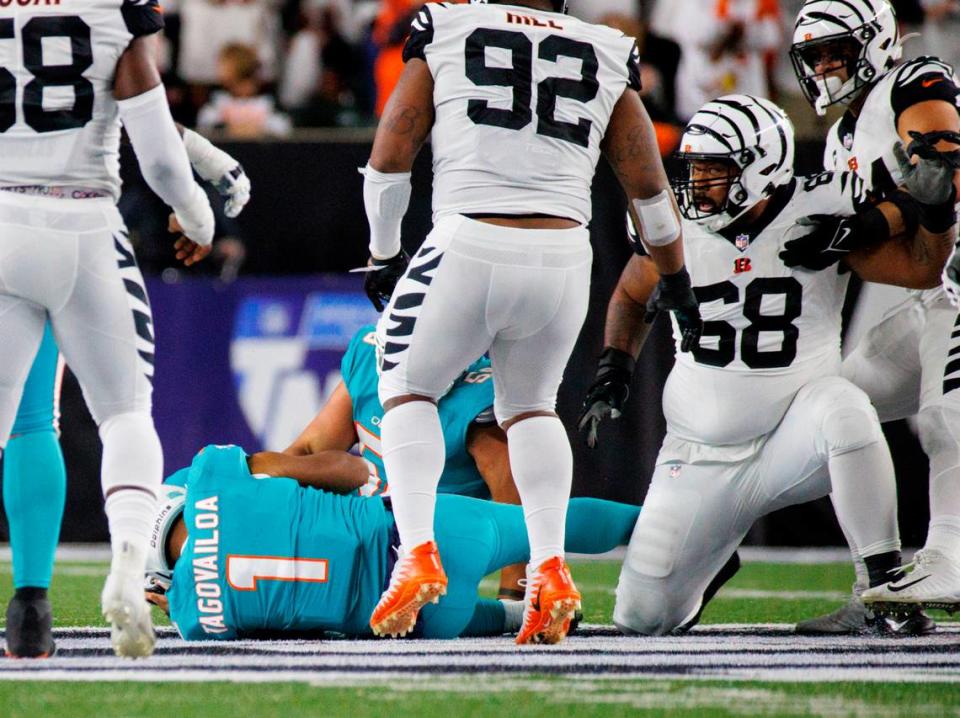Tagovailoa’s hands displayed a ‘fencing response’ — a concussion symptom — after injury
Tua Tagovailoa’s injury in the second quarter of the Miami Dolphins’ game against the Cincinnati Bengals on Thursday was scary because all potential head or neck injuries are, but also because of how the quarterback’s body responded.
After Josh Tupou swung Tagovailoa to the ground for a sack with 5:57 left in the first half of Thursday Night Football, Tagovailoa’s arms and hands tensed up in a manner consistent with a fencing response — a classic symptom of a concussion.
The “unnatural position,” according to Healthline, a medical network of healthcare professionals, consists of “forearms extended or flexed, usually in the air. ... It lasts up to several seconds after the collision.”
The Dolphins brought out a stretcher and backboard to take Tagovailoa off the field at Paycor Stadium, and took him to the University of Cincinnati Medical Center. Miami ruled him out with a head and neck injury, and announced he had movement in all extremities.
The injury also comes just days after the NFL Players’ Association initiated an investigation of the Dolphins’ handling of a potential concussion for Tagovailoa on Sunday. The 24-year-old exited the game in the first half of Miami’s win against the Buffalo Bills last weekend and entered concussion protocols after he stumbled while trying to walk back to the huddle following a roughing the passer. Tagovailoa cleared protocol in time for the second half and led the Dolphins to a come-from-behind win at Hard Rock Stadium in Miami Gardens.
After the upset win, both Tagovailoa and coach Mike McDaniel said the bigger issue for Tagovailoa was a back injury, which both said he played through. The Dolphins listed him as questionable for the Bengals game because of both back and ankle injuries, with Tagovailoa clear of concussion protocols.
McDaniel said the team would comply with the NFLPA’s investigation. Players are required to be examined by an independent neurologist before returning from a head injury.
Now, Miami’s handling of the injury is under an even bigger microscope after what happened in Cincinnati.

 Yahoo Movies
Yahoo Movies 

